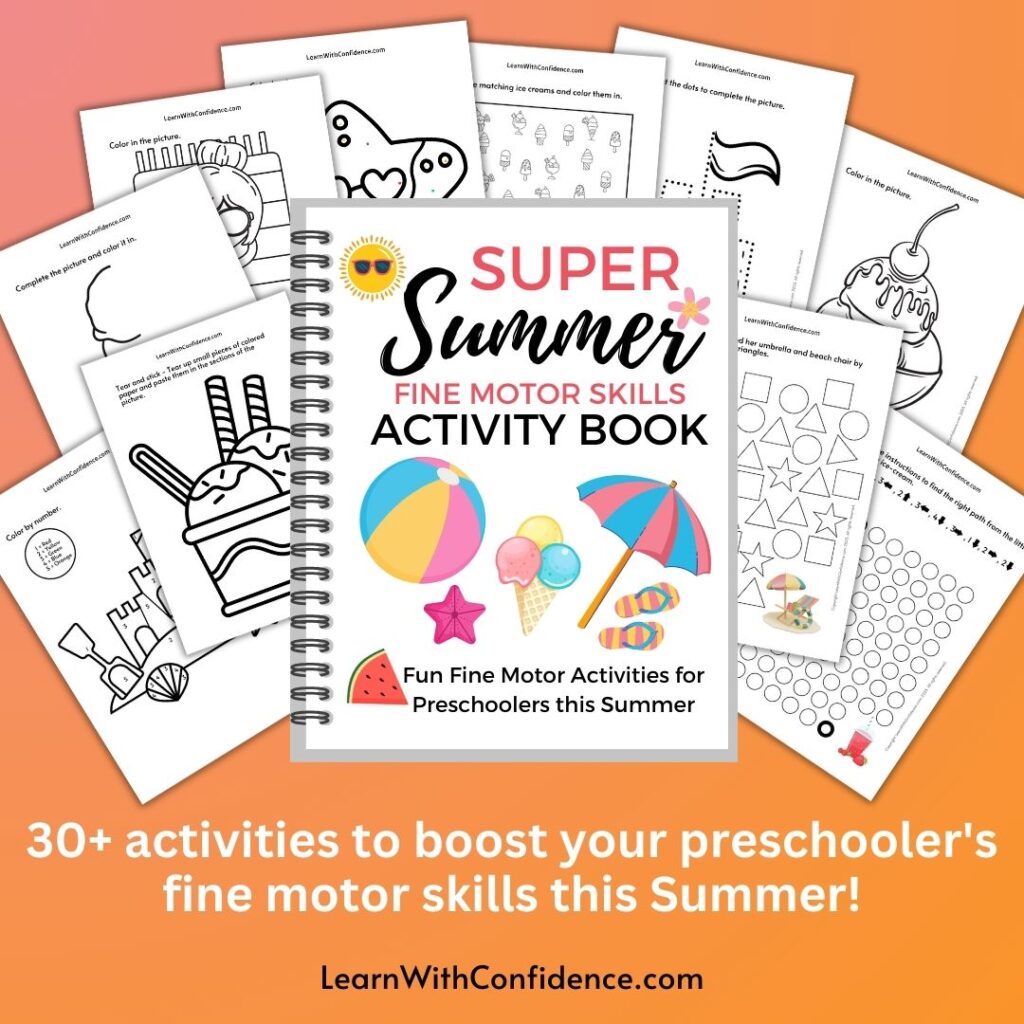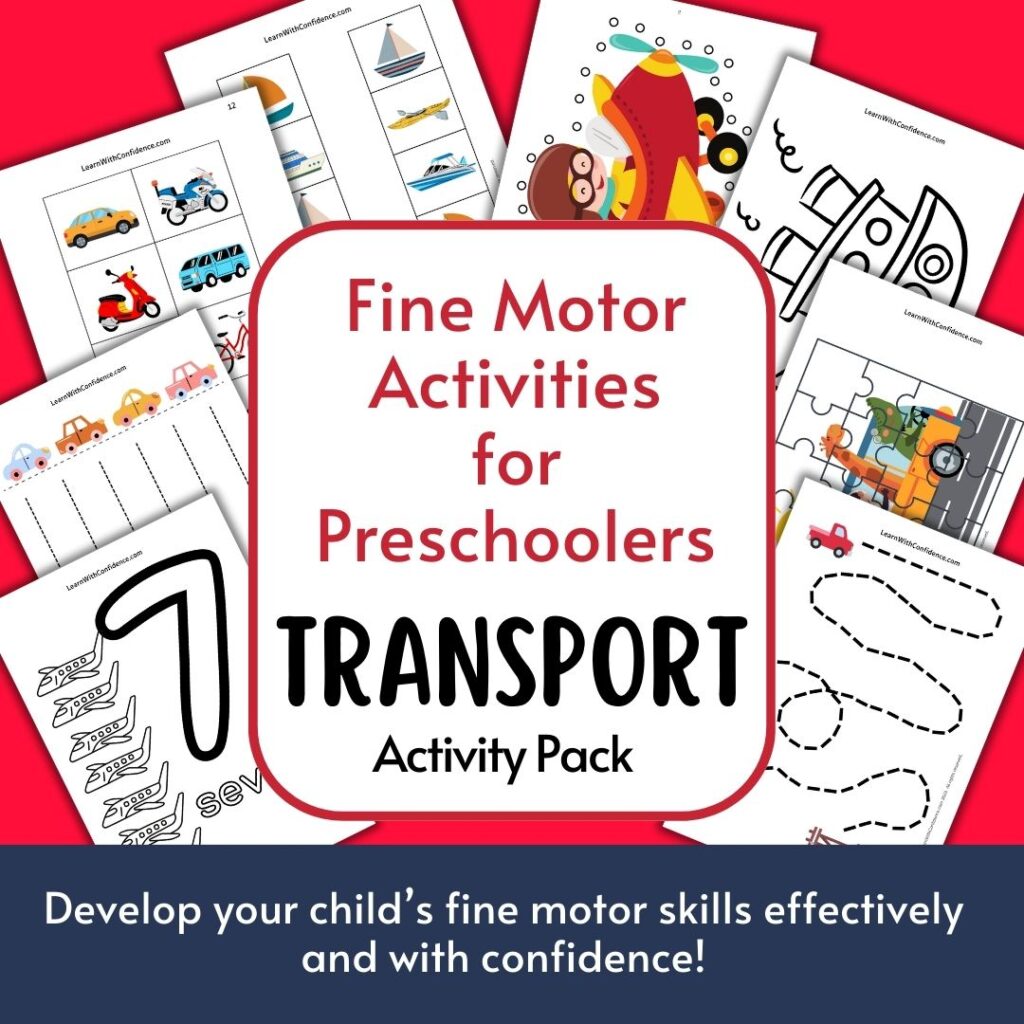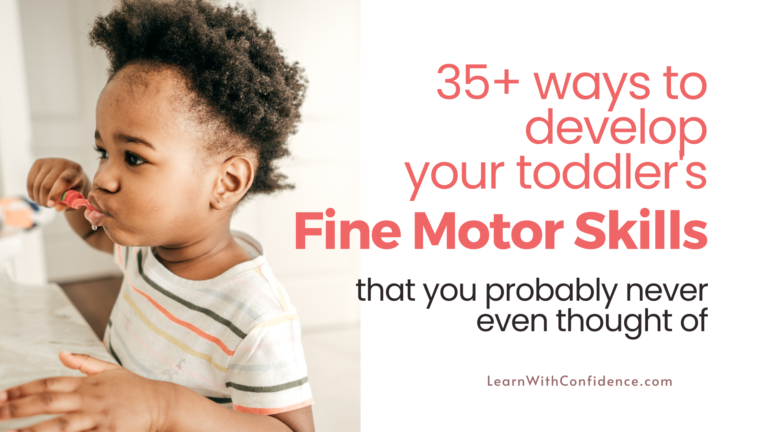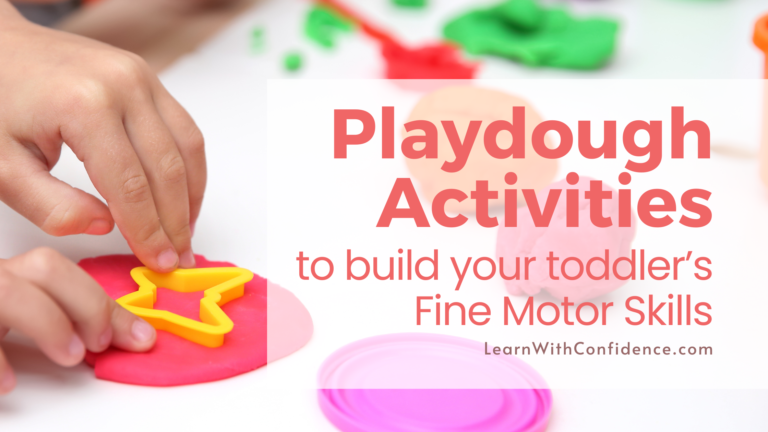Develop Correct Tripod Pencil Grasp with these Fine Motor Tips for Preschoolers
Developing the correct tripod pencil grasp can be easy if you know what to teach your child and how to practice this skill. These tips and tricks will help your child to correct their pencil grip easily and can really set them up for success in writing right now and for many years to come!
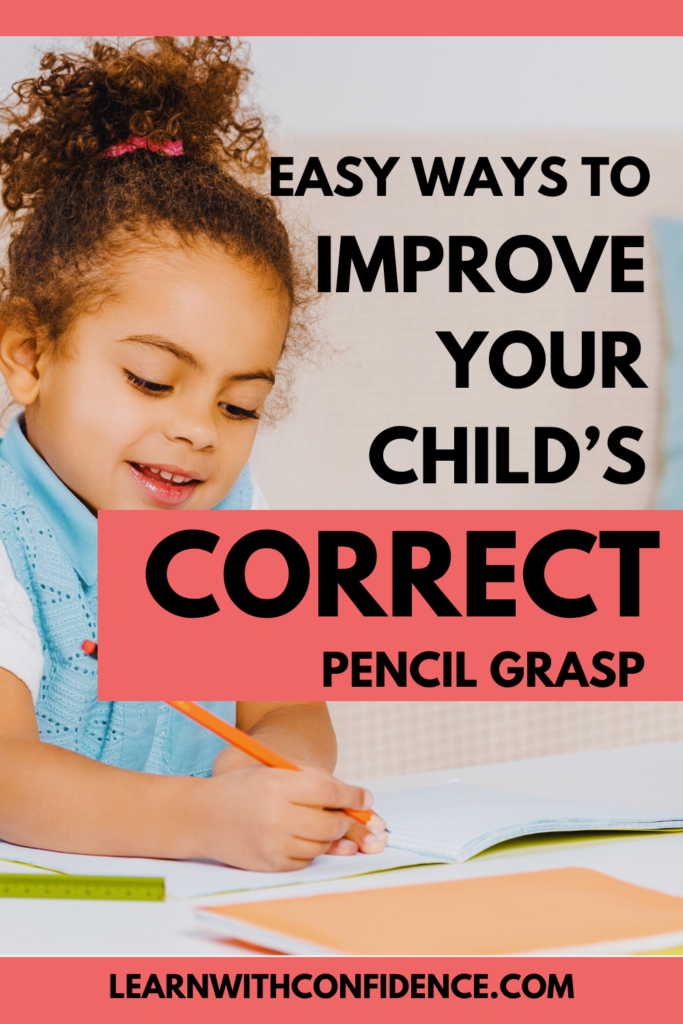
Why is Correct Pencil Grasp Important?
You might be wondering why there’s such a focus on this. If the child can write the words correctly and get the work done, so what if they’re holding the pencil correctly?
And I guess there’s a point there. Right now.
But what about when they’re older and when the writing demands increase exponentially? When they’re required to write more, for longer periods and at faster pace.
Having the correct pencil grasp offers these advantages:
Movement comes from the right place
The natural progression of pencil grasp is from a whole arm movement to wrist movement and finally to finger movement whey they’re holding their pencil correctly. This means that when your child’s pencil grasp has matured they’ll be using much fewer “big” muscles to achieve this movement. And the advantage of that is that they won’t tire out so easily when writing for longer.
Better letter formation
When the movement is coming from the right place and the motion is controlled by those small muscles in the fingers, the writing can be more refined. This means your child will write more legibly and be able to control the formation of the letter and words more easily.
Improves speed
The correct pencil grasp allows your child to move through their writing tasks more easily as we’ve seen which also helps them to work through them more quickly! This means they find it easier to keep up in class and actually finish all the work they have to complete.
They can focus on the content they’re writing, not how to actually write it
When writing is easy and natural, your child won’t have to be consciously aware of how they’re writing the letters and words. When it becomes an automatic activity, their focus can be on expressing themselves rather than on whether they put the letters on the page correctly.
It boosts confidence
No matter how much we teach our children not to compare themselves with others, they will continue to do it. It’s a human survival mechanism. But when your child looks around to assess if they’re on par and they find that they are struggling to keep up, their handwriting looks messy and they just seem to be finding this harder than their peers, they notice! And it affects their self-esteem!
When a child feels like they’re competent at something they feel confident! Developing the correct pencil grasp can improve their competence in writing and set them up for confidence in their abilities.
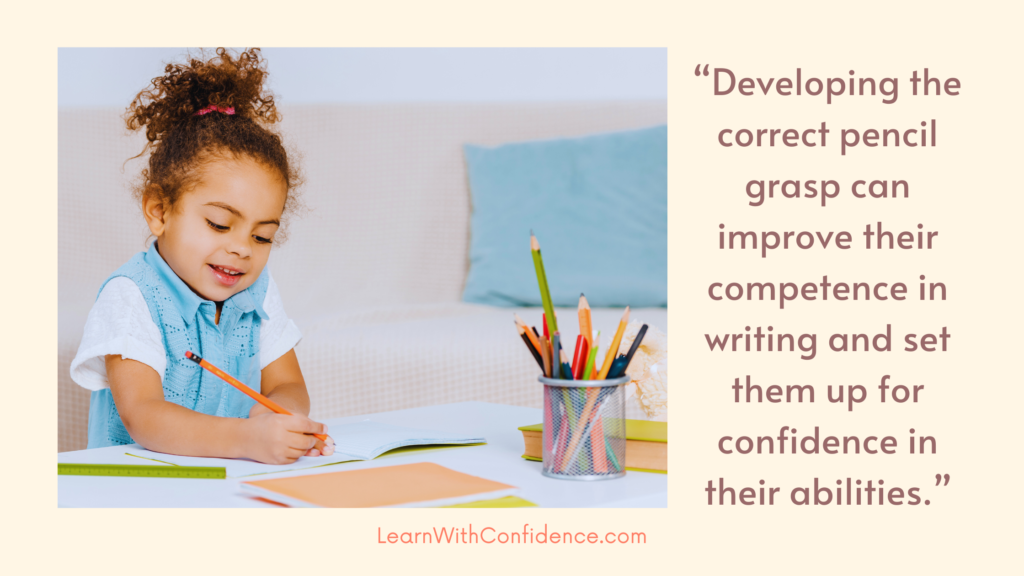
What is the Correct Tripod Grasp?
Before we jump into what the correct trip grasp looks like, remember that this is a developmental skill. This means it goes through stages of development until it is refined into the ideal tripod grasp.
And before we can teach our little ones how to use their hands for this skill, it helps to understand how their hand is designed.
Understand how your preschooler’s hand works
Your little one’s hand is divided into two “hemispheres”. Imagine you could draw a line between the ring and middle finger down the length of your hand. In the writing process, the ring and pinky finger are there for stability, and the middle and index fingers and thumb are used for movement.
The ring finger and pinky should be tucked into the hand, touching the palm. They will only be there to give the system stability, they won’t move around with the pencil.
The pencil should be held just above the shaved part between the thumb and index finger. The middle finger goes behind the pencil and the pencil rests on it, just below the first knuckle. When you look directly at the pencil lead, facing you, you’ll see why we call it the tripod grasp!
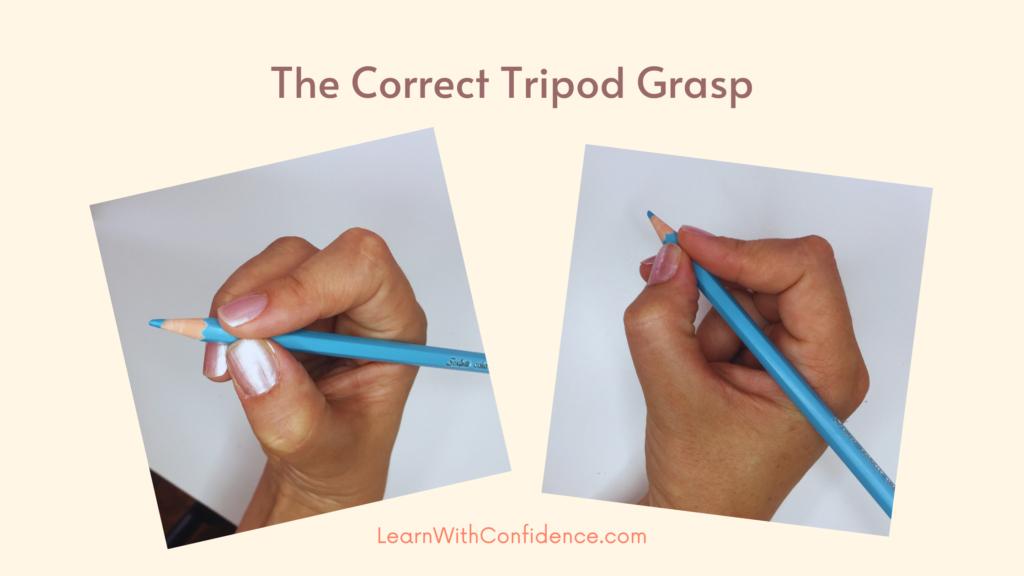
What age should a child be able to hold a pencil correctly?
This fine motor milestone is an important one we’re often “building towards”. After all, a lot of people believe the end goal of all fine motor development is writing skills – we know it’s much more than that though.
The tripod grasp begins to develop at around 3-4 years old and then is refined and should be fully developed by 5-6 years old.
But as with all developmental skills, the range of “normal” is large and depends on lots of factors.
To hold and use a pencil with the correct tripod grasp, your child needs strength in the correct muscles in their fingers, hands and wrists. They also need strength in their gross muscles too (like in their shoulders arms and even their core). These muscles all start developing the strength and coordination they need from when your child was a baby and into toddlerhood, so they’re ready for these finer skills to develop in preschool.
So the long answer is that the correct tripod grasp starts developing MUCH earlier when your child is working on building strength and coordination in the many muscles they will need for it.
This resource shows the progression and refining of the pencil grip as well as how NOT to hold a pencil.
How can I help my Preschooler Develop the Correct Tripod Pencil Grasp
Helping your preschooler develop the correct pencil grasp goes beyond just teaching them how to hold the pencil in their hand. They need a stable and strong base to work from and then we can refine it.
Activities to build shoulder and wrist stability and core strength
Your child’s gross motor skills are important for developing their fine motor skills. Activities that develop their core strength, as well as arm strength and shoulder stability, are important. Even hip stability is important because most of your child’s writing will happen while they’re sitting on a chair using their hips and core to keep them upright. It’s all connected!
If these are not in place, fine motor activities like writing become more difficult because they don’t have a strong, stable structure to depend on.
Activities like these will develop the gross motor strength and coordination creating a firm foundation for fine motor skills to develop from:
- climbing on jungle gyms or trees
- hanging on monkey-bars
- handstands
- throwing ball against a wall
- climbing up rope
- animal walks (like crab walks (hand and feet on ground body lifted up from a sitting position)
- wheelbarrows with a friend
Activities to build strength in the hands and fingers
All the muscles in the fingers, hands and wrists need to have strength and work in a coordinated way before we can expect those muscles to hold a pencil correctly.
This is why fine motor activities that suit your child’s age and developmental stage are so important so you can develop the correct muscles at the correct time. Use this Fine Motor Milestone Checklist to guide you about what activities your child is ready for, at the stage they’re in, or, perhaps some milestones they’ve “missed” that you can work on with them.
Here are some examples of activities you can do with your little. (And here are more ideas of easy everyday fine motor activities.)
- Picking up little objects like pompoms with the pincer grasp (thumb and index finger)
- Building towers with blocks or even plastic cups
- Threading – holding the bead, threading the string through
- Pegs – putting pegs on a wash-line and taking them off
- Tweezers – picking up small objects using tweezers
- Zippers on jackets, tying shoelaces, and other opportunities to dress themselves
Teach your child the correct tripod grasp
Once we have the gross motor and fine motor muscles and coordination in place, we can work on the correct tripod grasp.
They will not JUST develop by itself, it’s something we have to TEACH our children and have them practice to really refine it.
Here are some tips.
- Tuck the pinky and ring finger in. Have your child hold something small in those two fingers – a pompom, a small eraser, a small Lego block.
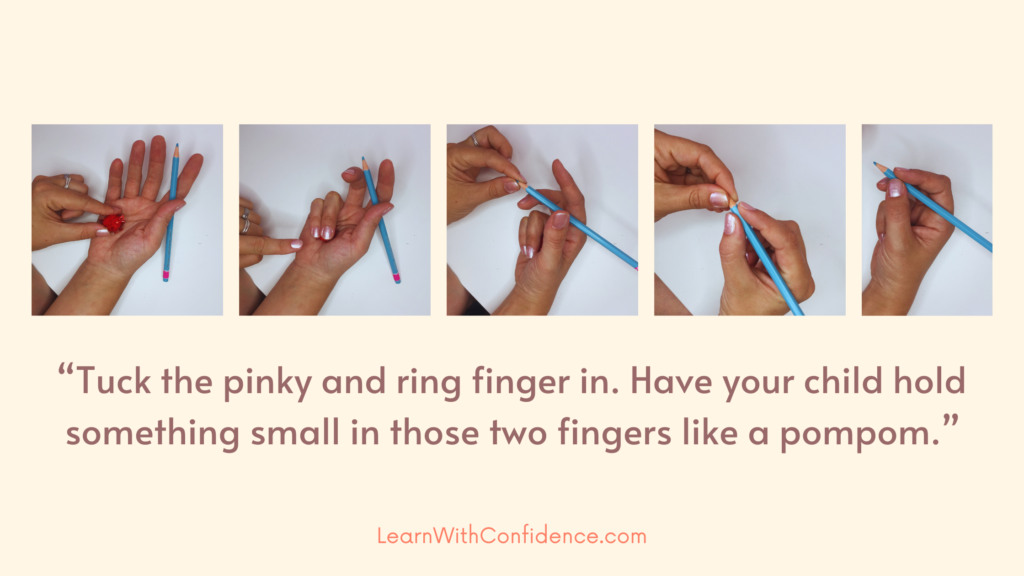
- Draw two dots with a marker on the pencil in the correct place and then draw two dots on the thumb and index finger of your little one. Let them match up the dots and rest the pencil on their middle finger. The dots on the pencil are the eyes and the dots on the fingers are the glasses. We call our pencil “Slinky” and remind our kiddos to “put Slinky’s glasses on!”
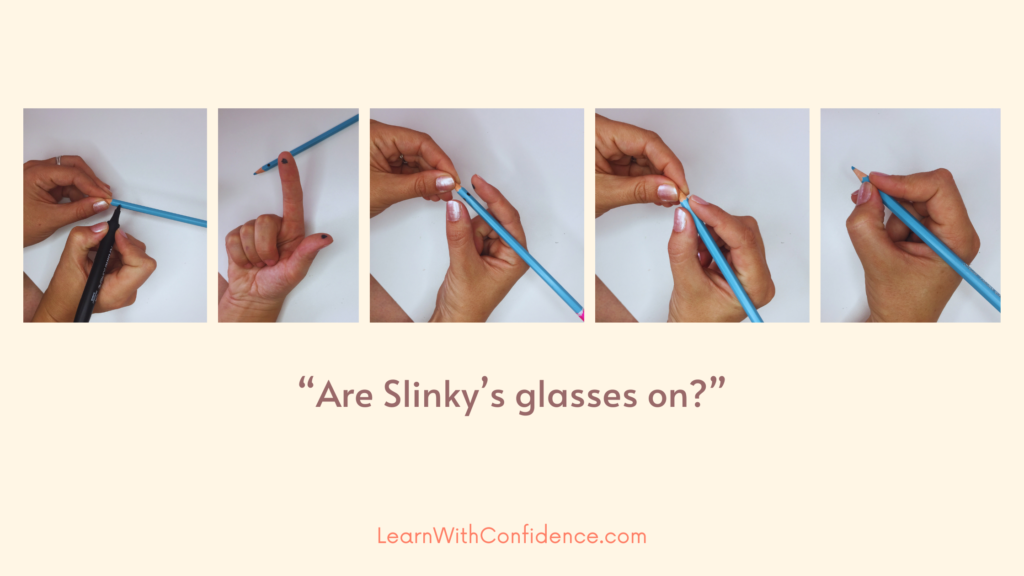
- Encourage this with EVERY drawing, coloring, writing activity, reminding and correcting so they can develop the neural pathways needed to make it an automatic activity
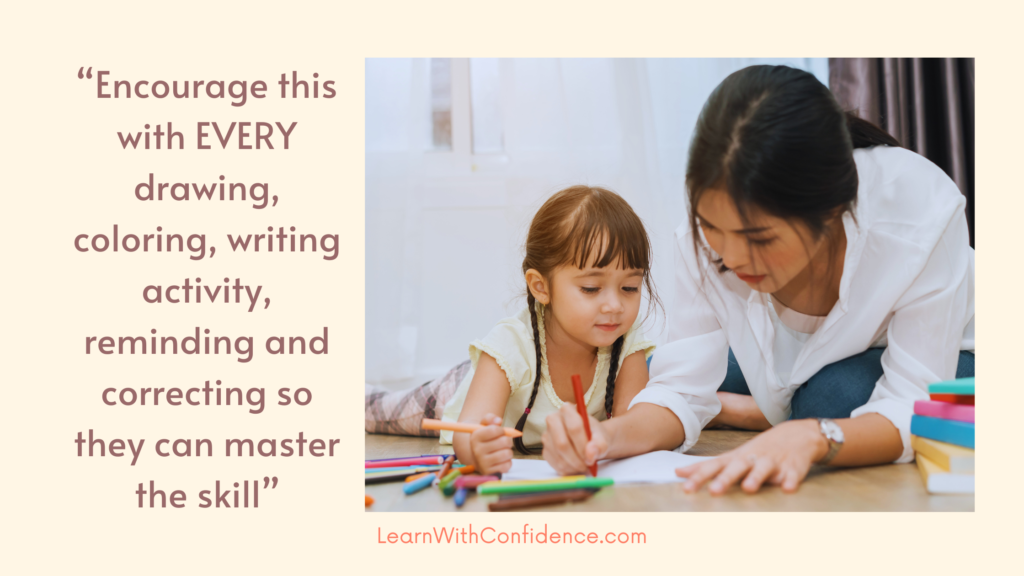
Pre-writing activities to develop the correct tripod pencil grasp
Here are some ideas of activities your preschooler can do to practice using their correct tripod grasp:
- Coloring
- Tracing
- Dot to dot
- Drawing
- Painting – use a paint brush or even q-tips
You can find a ton of resources in my store that will help you with exactly these things. They also develop other important cognitive skills like letter and number recognition, planning and working memory and more!

Early wins!
When children find a task easy and they see that they are succeeding at it, this builds their confidence and makes them want to keep on working at that skill. Helping our kids build the skills they need early on can really set them up for a MUCH easier ride at school later on so its definitely worth putting in the time when they’re little.
Ready to Learn More about Supporting your Child’s Fine Motor Development?
Here are some more awesome Fine Motor Resources I think you’ll love!
Connect with me
Have you got a new way to play with your child while you have fun developing their fine motor skills – drop a comment to let us know!
Feel free to reach out in the comments or send me an email to connect. It’s my mission to equip and empower you to help your child succeed – you are, after all, the best person for that job, because you are the expert on your child.

